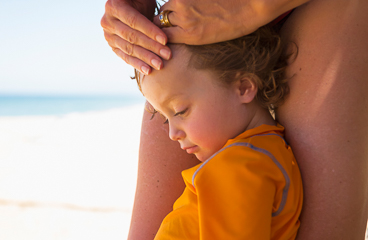
Your Care Instructions
MRSA stands for methicillin-resistant Staphylococcus aureus. It is a type of bacteria that can cause a staph infection. But it's harder to treat than other staph infections. This is because some antibiotics cannot kill MRSA.
MRSA has become more common in healthy people. The bacteria are found on skin and in the nose. MRSA can spread from person to person.
The bacteria can cause infections of the skin, such as abscesses, boils, or cellulitis. It can also cause infections of the heart, blood, and bones. It can spread quickly in the body and cause serious problems.
If the infection causes a boil on your child's skin, the doctor may need to drain the fluid from the boil. The doctor may also give your child antibiotics through a small tube placed in a vein. This is called an I.V. Your child could also get an antibiotic ointment to put on sores or in the nose.
Follow-up care is a key part of your child's treatment and safety. Be sure to make and go to all appointments, and call your doctor if your child is having problems. It's also a good idea to know your child's test results and keep a list of the medicines your child takes.
How can you care for your child at home?
- If the doctor prescribes antibiotics, give them to your child as directed. Do not stop using them just because your child feels better. Your child needs to take the full course of antibiotics.
- Cover all cuts and wounds with bandages until they heal.
- Wash your hands often, especially after you touch bandages. Have your child do this too. This can keep the bacteria from spreading. Wrap bandages in a plastic bag before you throw them away.
- Teach your child not to share towels, washcloths, clothes, or anything that touched your child's wound or bandage. Wash your child's sheets, towels, and clothes with warm water and detergent. Dry them in a hot dryer, if possible.
- Keep shared areas clean. Use a disinfectant to wipe surfaces that other people touch. These include countertops, doorknobs, and light switches.
When should you call for help?
Call your doctor now or seek immediate medical care if:
- Your child has worse symptoms of infection, such as:
- Increased pain, swelling, warmth, or redness.
- Red streaks leading from the area.
- Pus draining from the area.
- A fever.
Watch closely for changes in your child's health, and be sure to contact your doctor if:
- Your child does not get better as expected.
Where can you learn more?
Go to http://www.healthwise.net/patientEd
Enter I296 in the search box to learn more about "MRSA in Children: Care Instructions".
Current as of: April 30, 2024
Author: Ignite Healthwise, LLC Staff
Clinical Review Board
All Healthwise education is reviewed by a team that includes physicians, nurses, advanced practitioners, registered dieticians, and other healthcare professionals.

